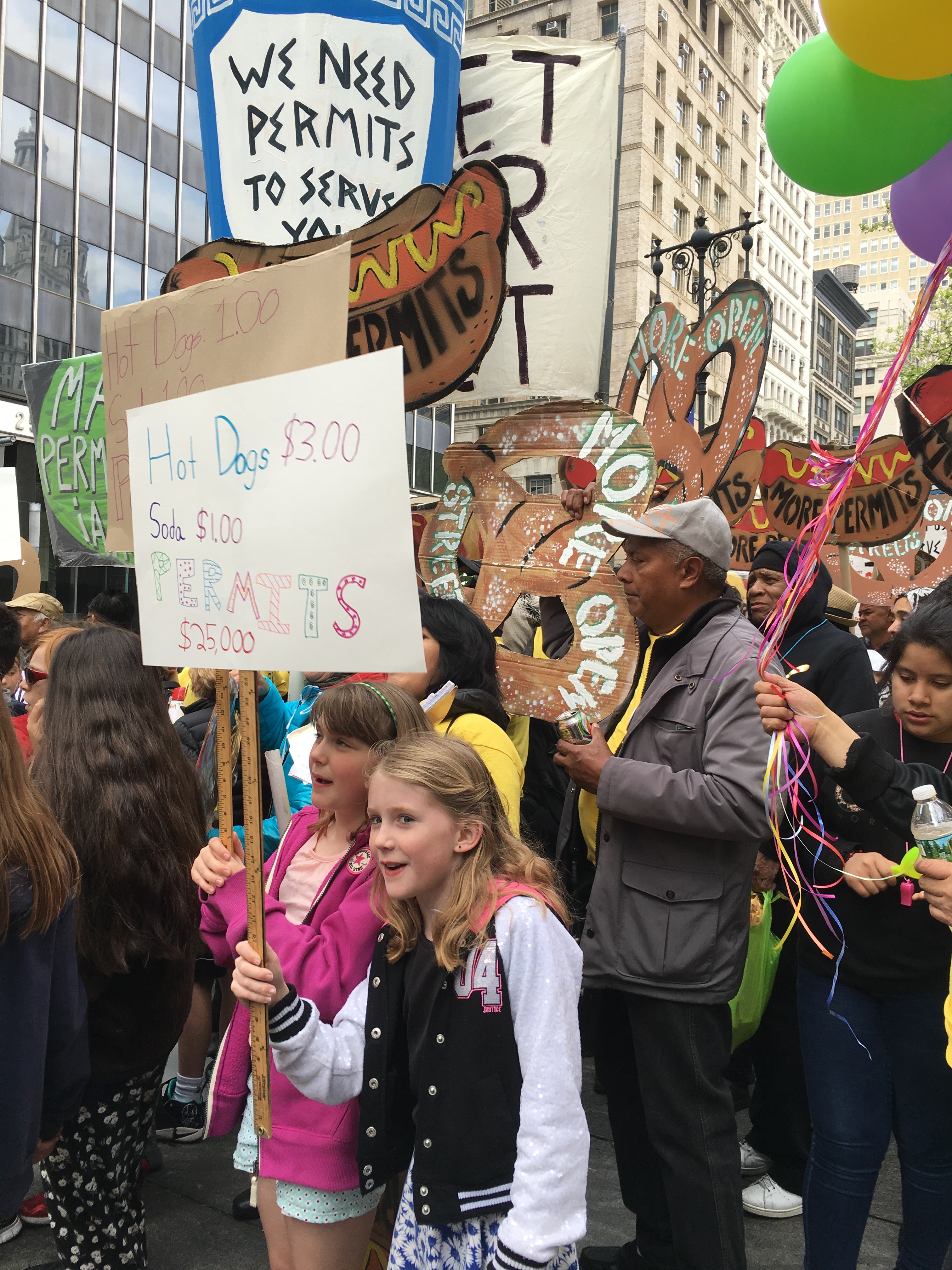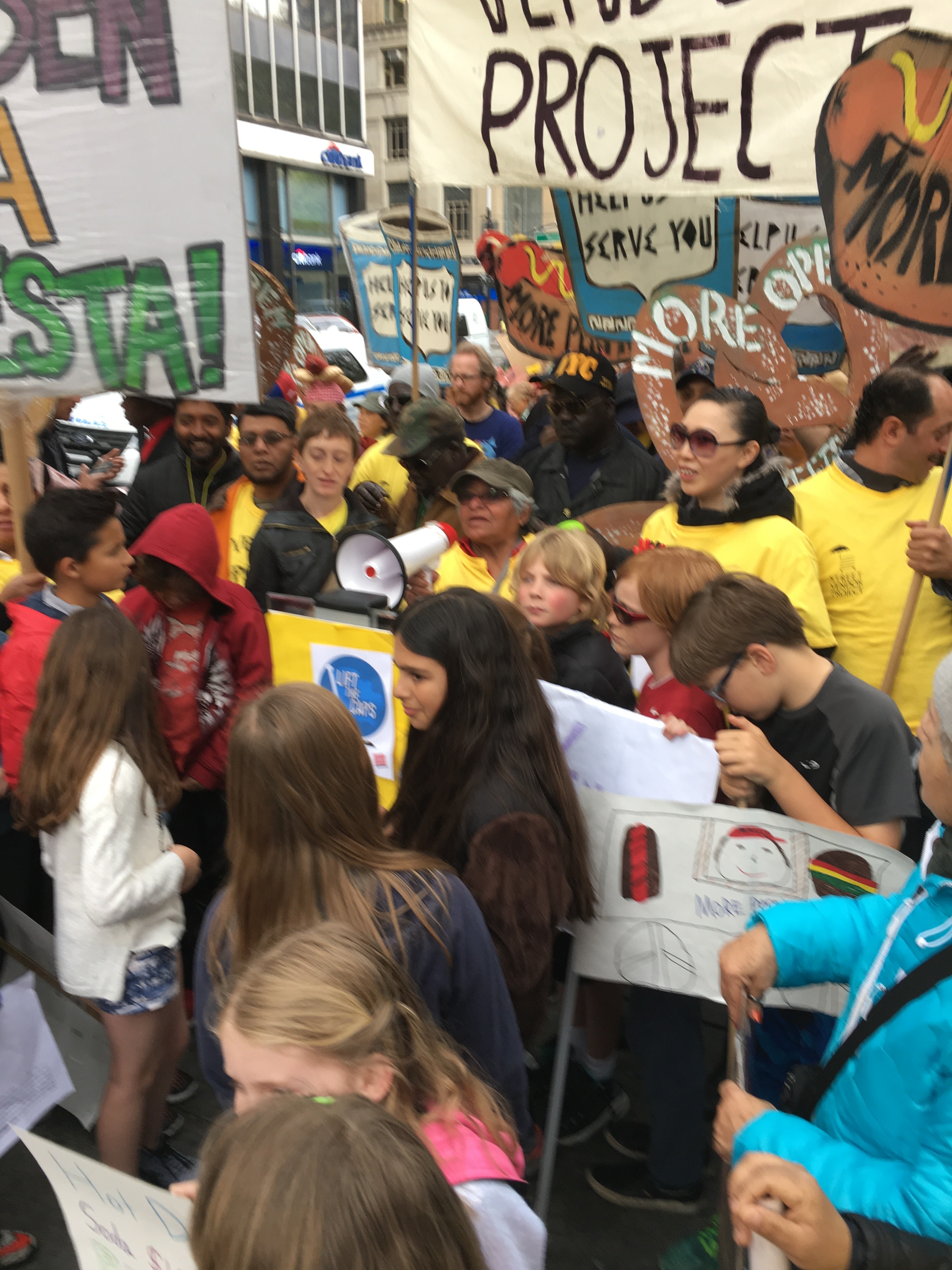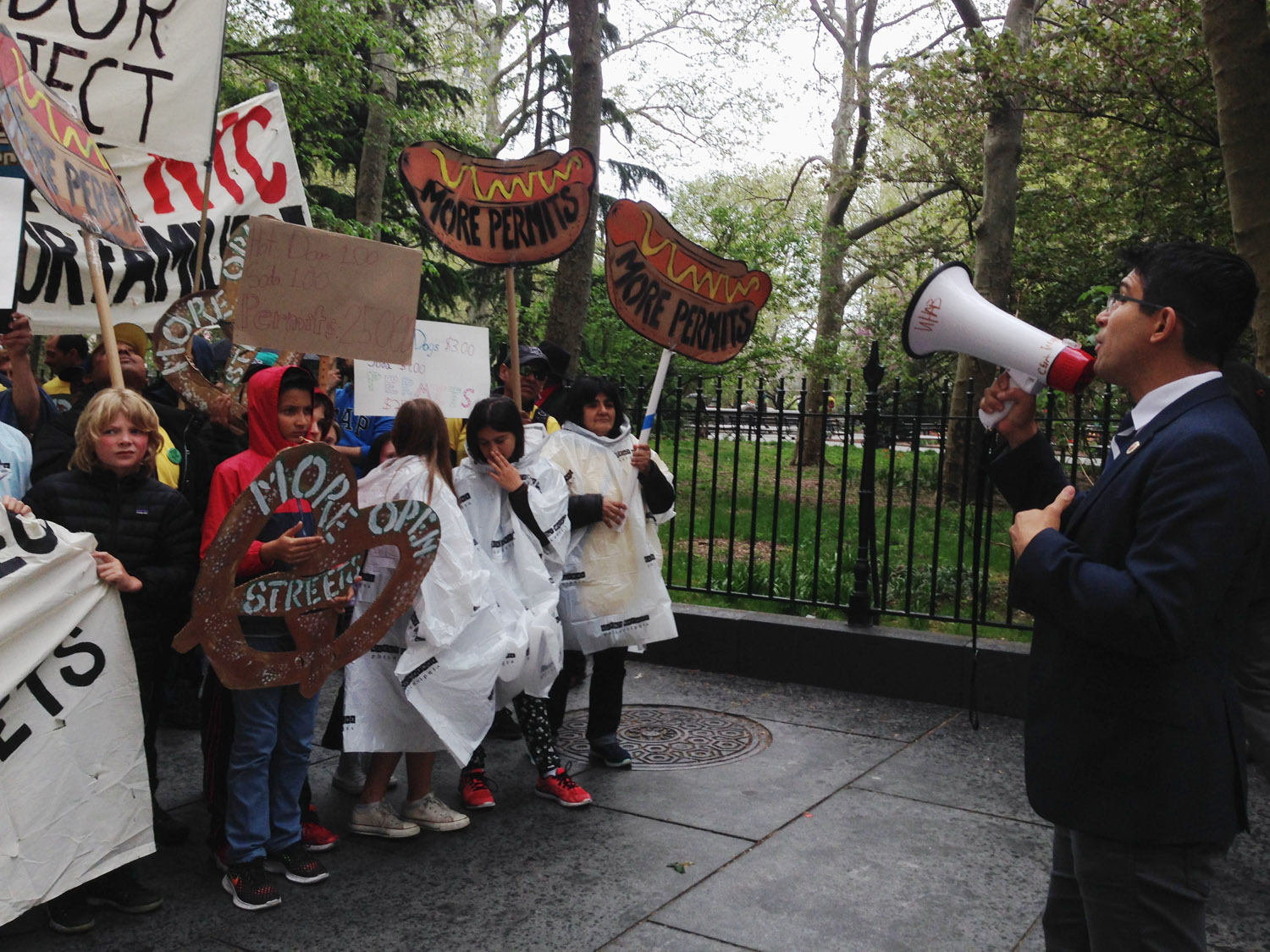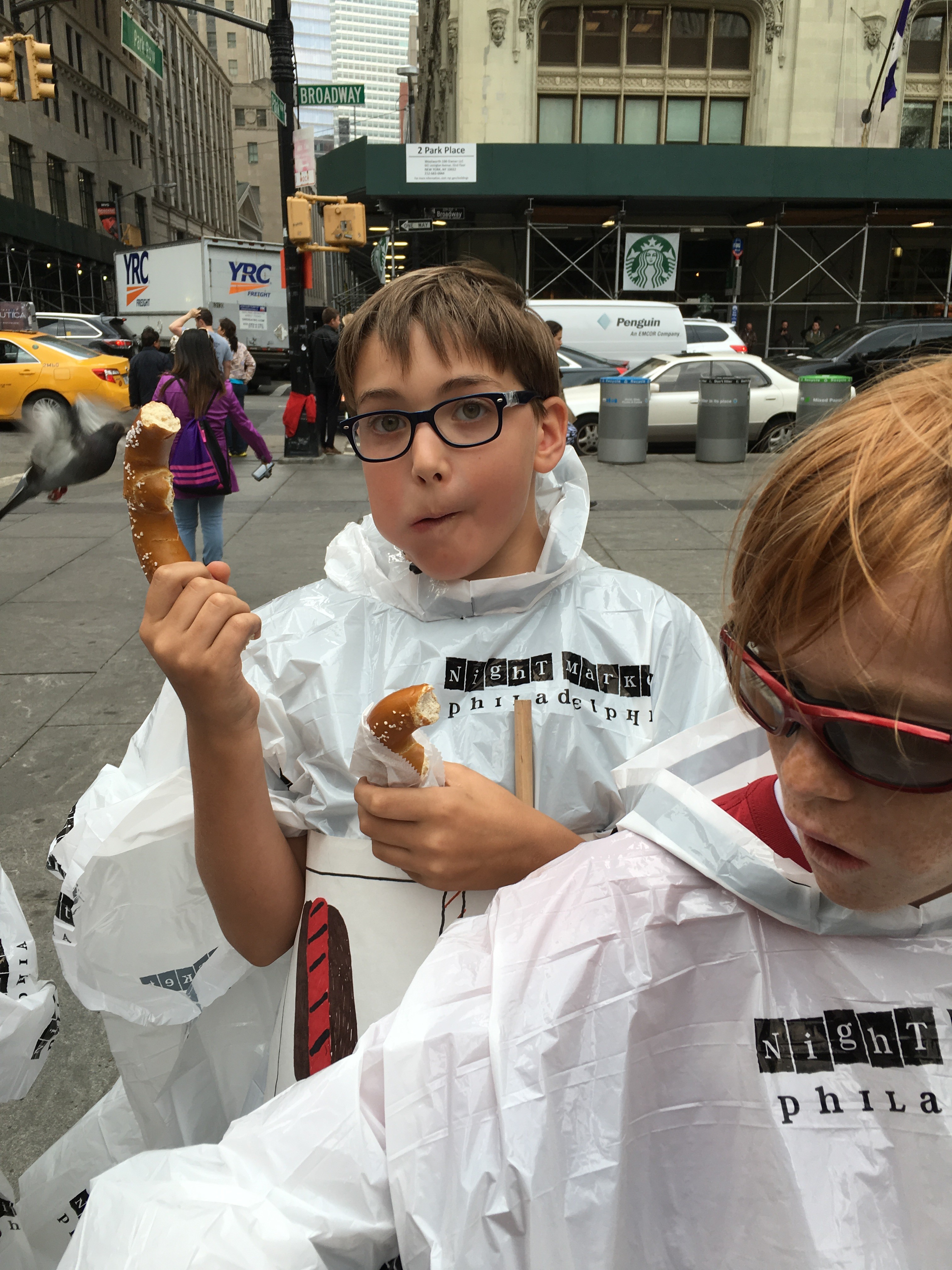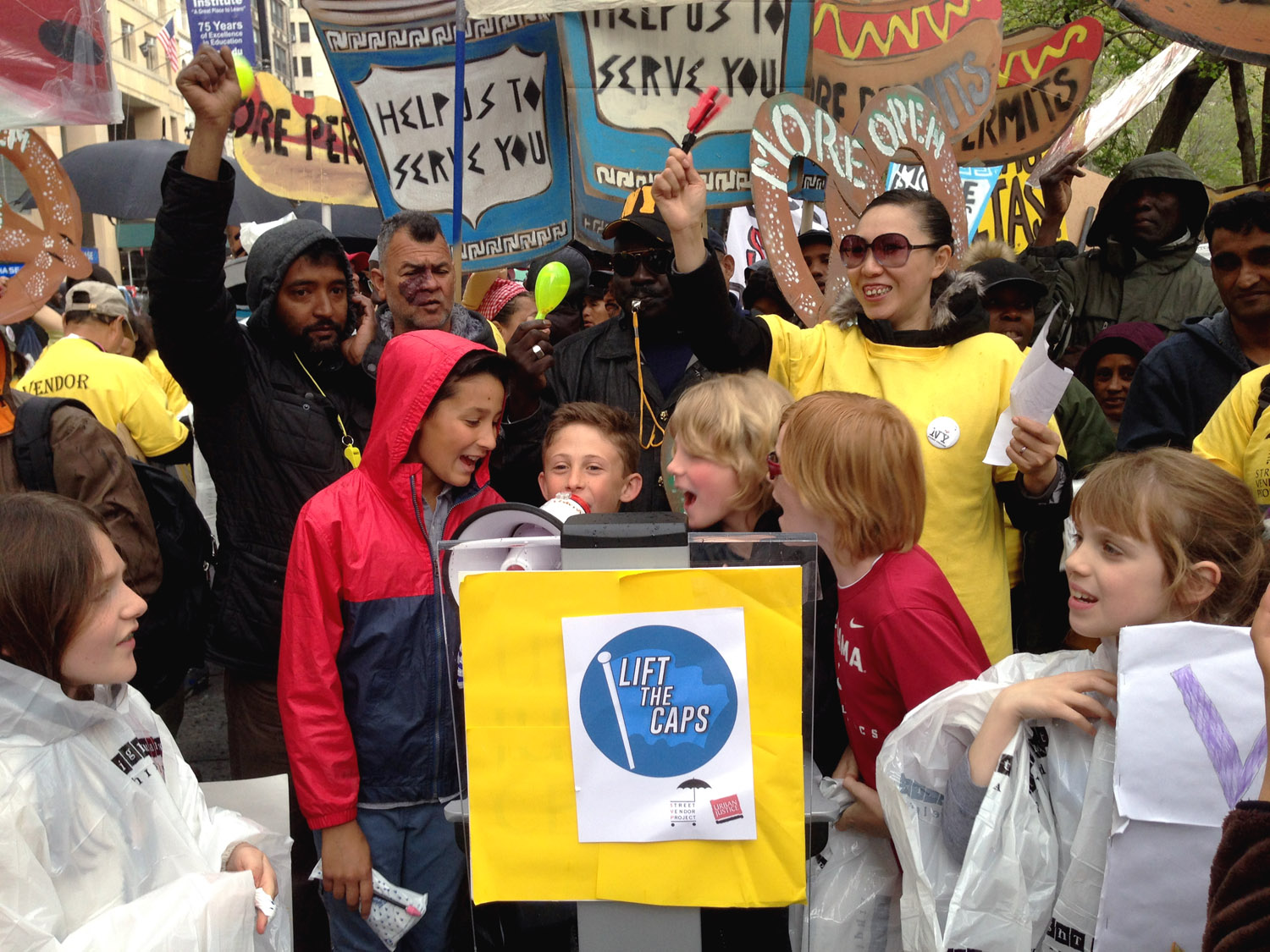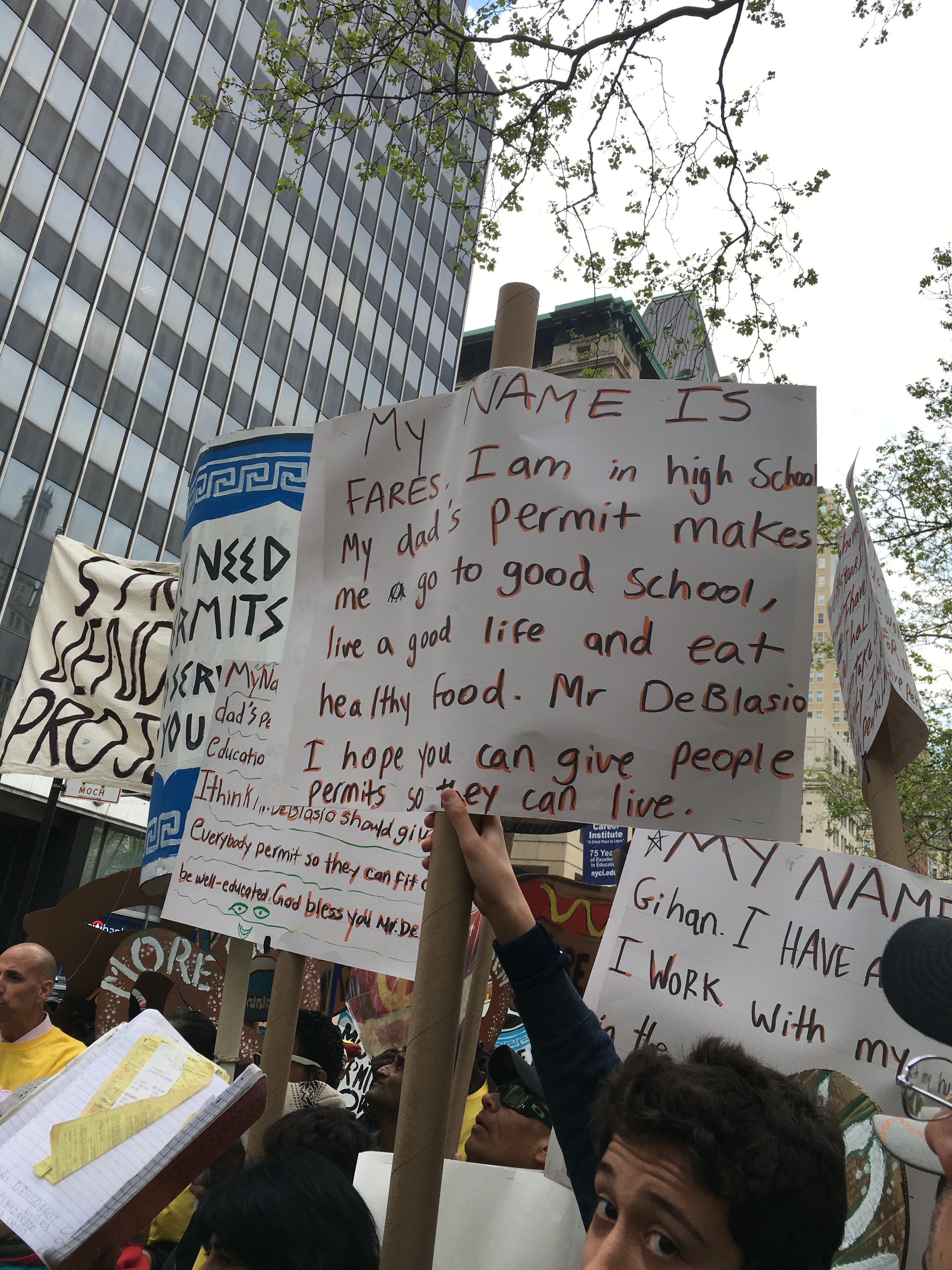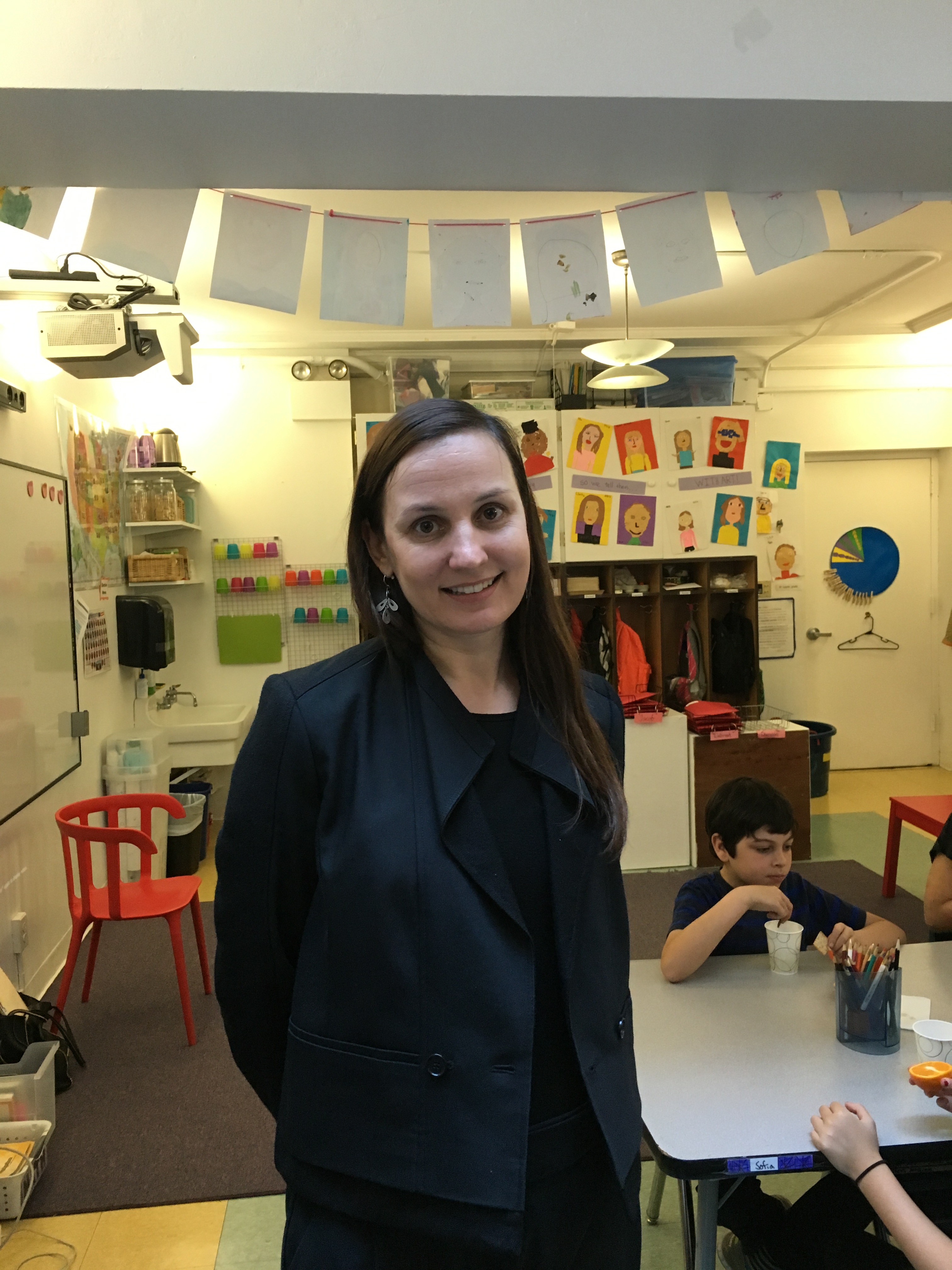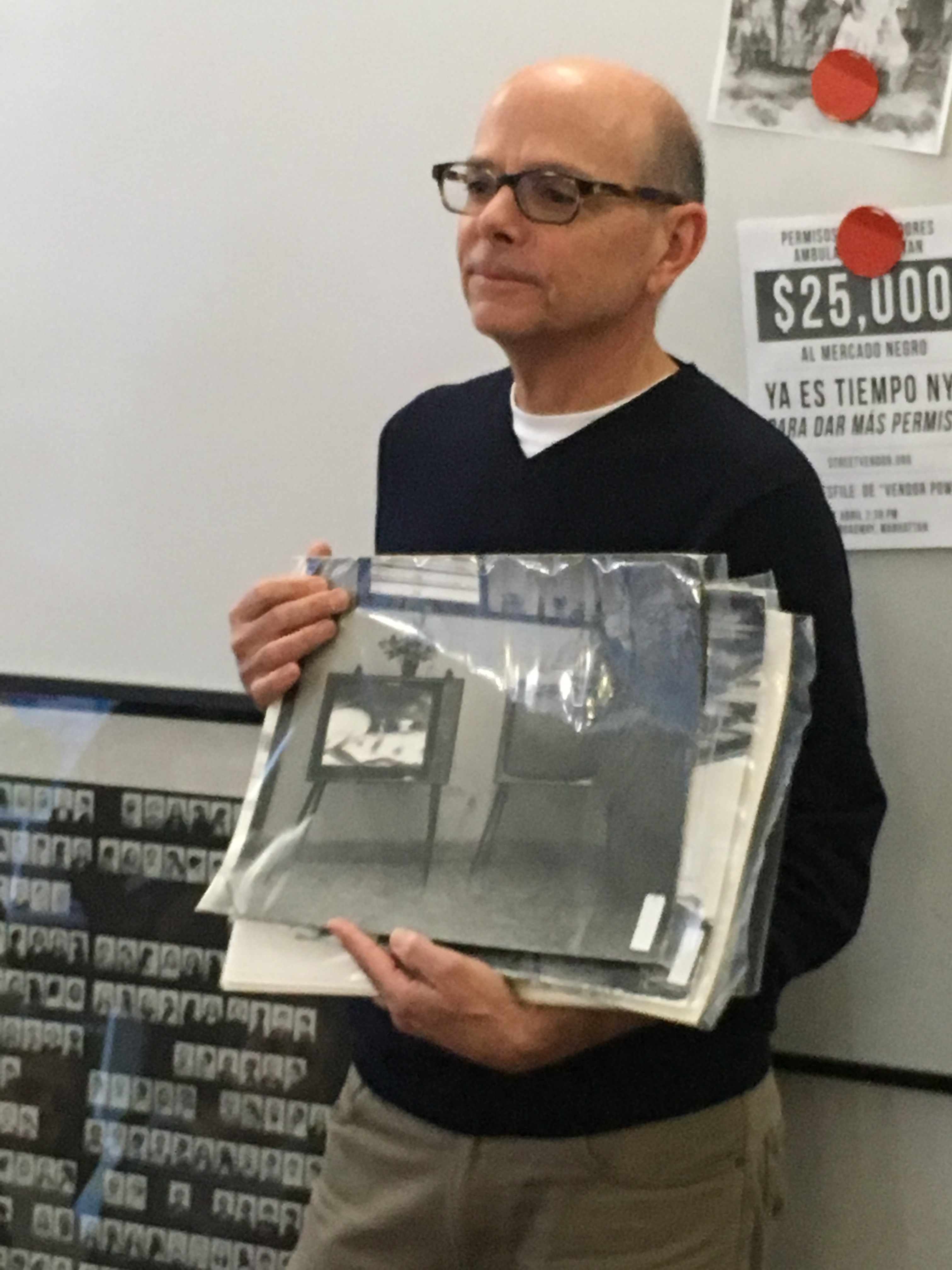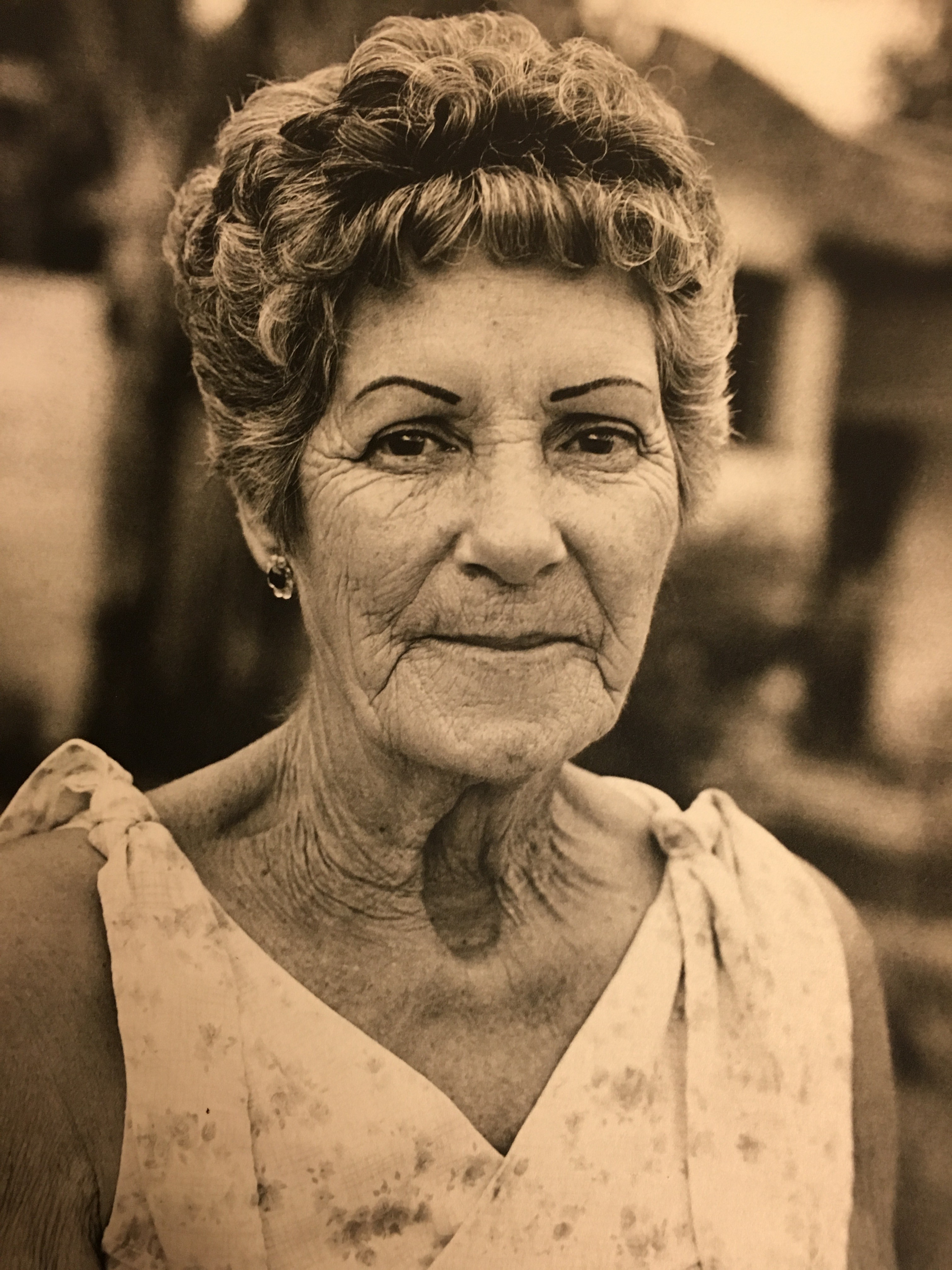Journal Entry
By Kate Deming
Tuesday, April 26, 2016
We hustled up the subway stairs holding a tightened grip on our signs filled with opinions and feelings.
City Hall was standing there before us and we heard chanting and movement. We got in the crowd as each vendor spoke. Each vendor, protester, activist, daughter, son, mother, said very similar phrases but each one had a meaning, a meaning that couldn’t be repeated. The rain fell, and fell but we didn’t stop fighting for a cause that we all believe will someday be fixed, for good. 70 different cultures were on that street with me, we sang and shouted until the rain fell harder 0n our feet. The vendors handed each and every one a poncho, that covered our head to our knees as we listened and heard much more.
Sean went up and told his speech, he told the story of many, the struggle of many, the permits, we all need them, but why can’t we have them? They say they will take over the city, they say they will take others out of the race, they say they have to pay more for that little square they cook in. But why? We don’t know, what all we know is that we need to fight for what is right, for human rights, we need to make things right, in the right way.
We see them in a blob, of signs held up tall, I see hot dogs, and cups, and cardboard and that if I turn in another direction I can still see them, there, chanting. The megaphone is in my ear, as the others shake their tickets they had gotten over the years. I want to stand and observe, but I want to protest, but I want write a news article about this rainy protest day.
We hustled down the subway stairs holding a tightened grip on our signs filled with opinions and feelings.
Editorial
by Dennis
On Tuesday seven kids in my class took the subway to City Hall to go to a street vendor parade to protest in support of the rights of food vendors.
There were hundreds of people everywhere. So many noises and people protesting for the rights of street vendors. A city council member spoke along with the head of the Urban Justice Center.
So many street vendors and people concerned with the cause were there expressing their feelings about the current situation. It was nice to know that so many people cared.
I learned that street vendors are valued as part of our city. I sometimes buy a hot dog, pretzels or ice cream so I always liked food vendors. I just did not know that so many other people do. Plus food cart food is much less expensive than food from a restaurant.
At the parade there were people from all different cultures uniting for a common goal. That sort of thing you only get to see once in your life.
Without our support many food vendors would not be able to make a living or feed their families.
A report from Violet
On Tuesday, I protested with some other kids in our grade. We first gathered right outside LREI. Then we walked in partnerships to the subway. We got into the subway station where everything smelled like old roasted chicken. As soon as we could get the subway pass we struck like lightning through the station. Once we got off the train we scattered into the streets. We walked for a while then we saw a big clump of colorful signs on the corner. We immediately realized this was the protest we were looking for. The protest that we were going to make a change in.
We walked up to the protest and stood in the very front. We were proud at that moment. A lady came up and made a speech. There were tv cameras all around us. A lot of people made speeches and then we started chanting. There were many different variations of chants.
One was,
What do we want? Permits! When do we want them? Now!”
but in Spanish. We chanted for a while and then the teachers said “We have to go.” Almost every kid said “Already?” After the protest, we got the BEST soft pretzels. The kids who couldn’t eat it because of Passover got shish kebabs.
Myles reports
When I was at the street vendor parade I noticed that there was a lot of cheering and chanting. I also noticed people from the Urban Justice Center making speeches. “We have waited along time for them to lift the cap, but they are not doing it,” said Sean Basinski, a lawyer for the street vendors. I learned that being a food vendor is really hard.
On Tuesday, I went to a protest with sixteen other kids from my grade. We protested that the city council give out more vending permits to vendors. I saw a lot of street vendors. A lot of the people from the Urban Justice Center were there to help. Some street vendors spoke and some members of the Urban Justice Center talked. Also, Finn talked too. We said a lot of chants. One of them went like this, VENDOR POWER, VENDOR POWER. A city council member came because he wants to give out more permits too. I really enjoyed it.
Grace reports
On Tuesday April 26, 2016 some people from the Fourth Grade went to a Street Vendor parade. I saw big signs and some were 3D! It was very cool. There were people speaking through megaphones and two people from the Fourth Grade got to speak!
Some people spoke about how the food vendors have kids and that food vending is what they do for a living.
They also told stories about getting arrested and not getting to do things other people can do. People were very passionate about this. There was chanting that I couldn’t understand. There were government officials there who were speaking too. I was surprised that the Food Vendors had their kids there and had very passionate signs. I learned that this is a very serious matter for both kids and elders.


